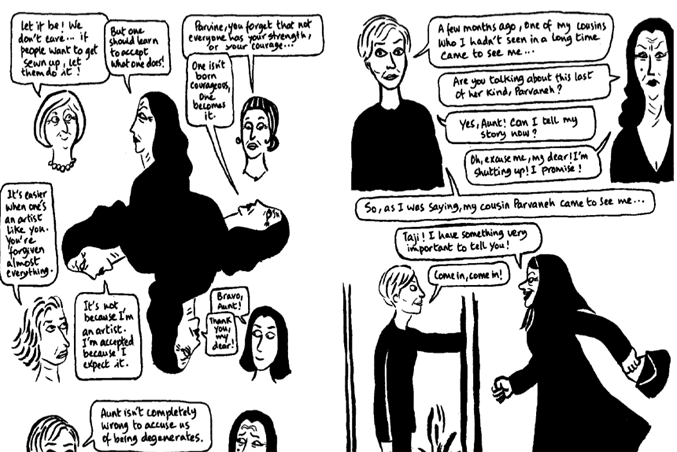By Emma Cosgrove
In the last 35 years, comic books have become much more than superheroes and speech bubbles, according to Ryerson researcher Barbara Postema.
“Comics can resist commodification by not fitting into a specific genre,” Postema said Tuesday during The Art of Cultural Positioning, a talk held in Jorgenson Hall. The lecture discussed Postema’s research surrounding unconventional comics in the Netherlands and North America.
“Unconventional reading practices, abstract comics, and genre-splicing are evident in modern comic-making,” she said.
Postema said that comic book creators have made an effort to reach out to mainstream mediums to access new audiences, such as adults and readers uninterested in fantasy or science-fiction.
“Because comics are such a small part of the cultural menu, genre plays an important part in building a broader cultural legitimacy,” she said.
Postema cited graphic novels as an example, with the comic book aligning itself alongside literature and adapting minor details such as the traditional “book shape.” In addition to this, she said comics are also taking on other formats, from travel journals to biographies.
“[Comics] are manipulating the form and kind of pushing at its boundaries,” Postema said.
Postema said that modern comics are “resisting fragmentation,” abandoning traditional panel structure for a streamlined reading experience that ensures pages are “treated as a whole.”
She passed around several comic books during her talk, one of which was Embroideries by Marjane Satrapi. It follows a conversation between a group of Iranian women, touching on subject matter involving relationships, love, sex and infidelity.
“This is the polar opposite of what one might call a spectacular comic,” Postema said. “The book flows from one topic to another, from anecdote to anecdote. It eschews panels, structuring pages around text balloons and captions that sometimes blend together. It’s very striking.”
Another type of unconventional comics Postema enjoys are silent comics. In fact, she is writing her own book on the topic. Silent comics don’t use text for dialogue or captions.
“For me it’s a way of really capturing how comics work, how comics communicate, focusing on the images. When you read a comic that has both text and image you don’t really know how much you’re reading is guided by the text. Some people maybe even read comics barely by even glancing at the pictures and just focusing on the text that’s given,” Postema said.
She said The Arrival by Shaun Tan is a powerful silent comic.
“The story is about the difficulty of communication with people who speak other languages, so having it as a wordless comic kind of reinforces that.”
Postema said these unconventional approaches to comics are causing the medium to grow “in all directions,” attracting women and minorities and becoming a wide-reaching art form, rather than a single genre.
“What I like about comics is that it makes you read images. You get so much information from the way the characters look. There’s a lot of reader involvement,” Postema said.










Leave a Reply